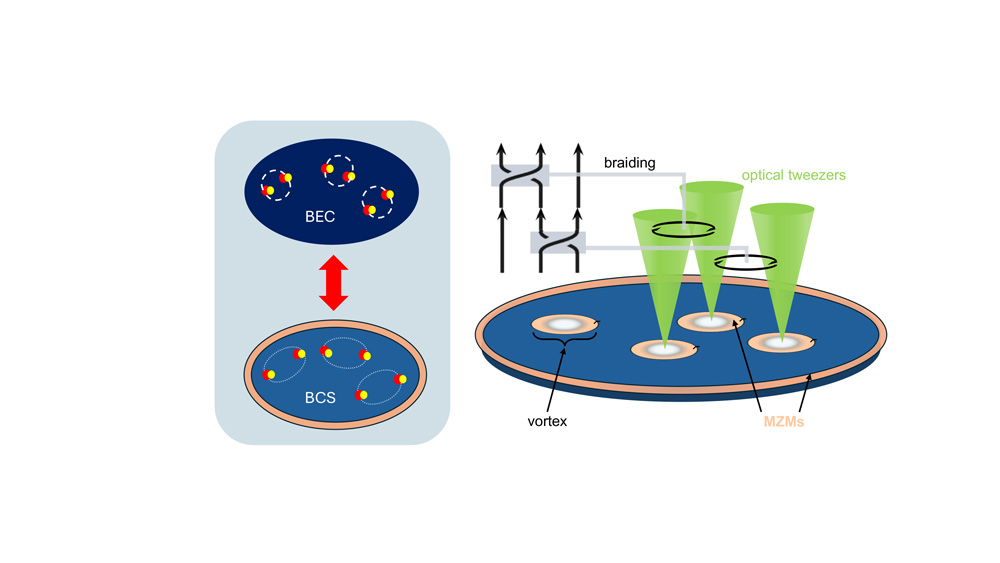Realizing p‑Wave Superfluidity in Ultracold Polar Molecules
Christine Frank — Hector Fellow Immanuel Bloch
Polar molecules enable the simulation of complex spin models and condensed matter phenomena due to their tunable long-range interactions. This project aims to investigate the transition from a Bose-Einstein condensate of tetratomic molecules to a diatomic p‑wave superfluid, referred to as BEC-BCS crossover. The superfluid is of special interest as it is expected to host Majorana zero modes—quasi-particles ideal for fault-tolerant topological quantum computing.
Recent progress in microwave shielding has improved control over intermolecular interactions, enabling polar molecules to reach the quantum degenerate regime. This makes it the right time to exploit the molecules’ large dipole moments and complex internal structures for studying many-body physics. Creating a Bose-Einstein condensate (BEC) of tetramers and transitioning to a Bardeen-Cooper-Schrieffer (BCS) state of dimers require ultracold temperatures in the nano-Kelvin range, while this novel BEC-BCS crossover is yet experimentally unexplored. The p‑wave superfluid emerging in the BCS side provides insights into materials like ³He and high-temperature superconductors. The px + ipy superfluid phase is furthermore topologically non-trivial and expected to host Majorana zero modes (MZMs), quasi-particles ideal for fault-tolerant topological quantum computing. Despite their long prediction, no definitive evidence for MZMs has been reported yet.
This project aims to create the px + ipy superfluid and explore the BEC-BCS crossover using techniques like Feshbach association in a large optical box trap and precise molecular interaction control via combined microwave fields. Additionally, the goal is to create, observe, and manipulate MZMs by stirring the superfluid to form vortices where MZMs could exist. Using optical tweezers, the vortices can be braided, enabling qubit gate operations. Absorption imaging will provide readout, potentially offering definitive evidence for MZMs.
Left: Crossover from Bose-Einstein condensate (BEC) of tetramers to p‑wave superfluid (BCS) of dimers. Right: Braiding vortices and corresponding Majorana zero modes (MZMs) via optical tweezers for topological qubit encoding.

Christine Frank
Ludwigs-Maximilians-University MünchenSupervised by

Immanuel Bloch
Physics Hector Fellow since 2012
Hector Fellow since 2012

